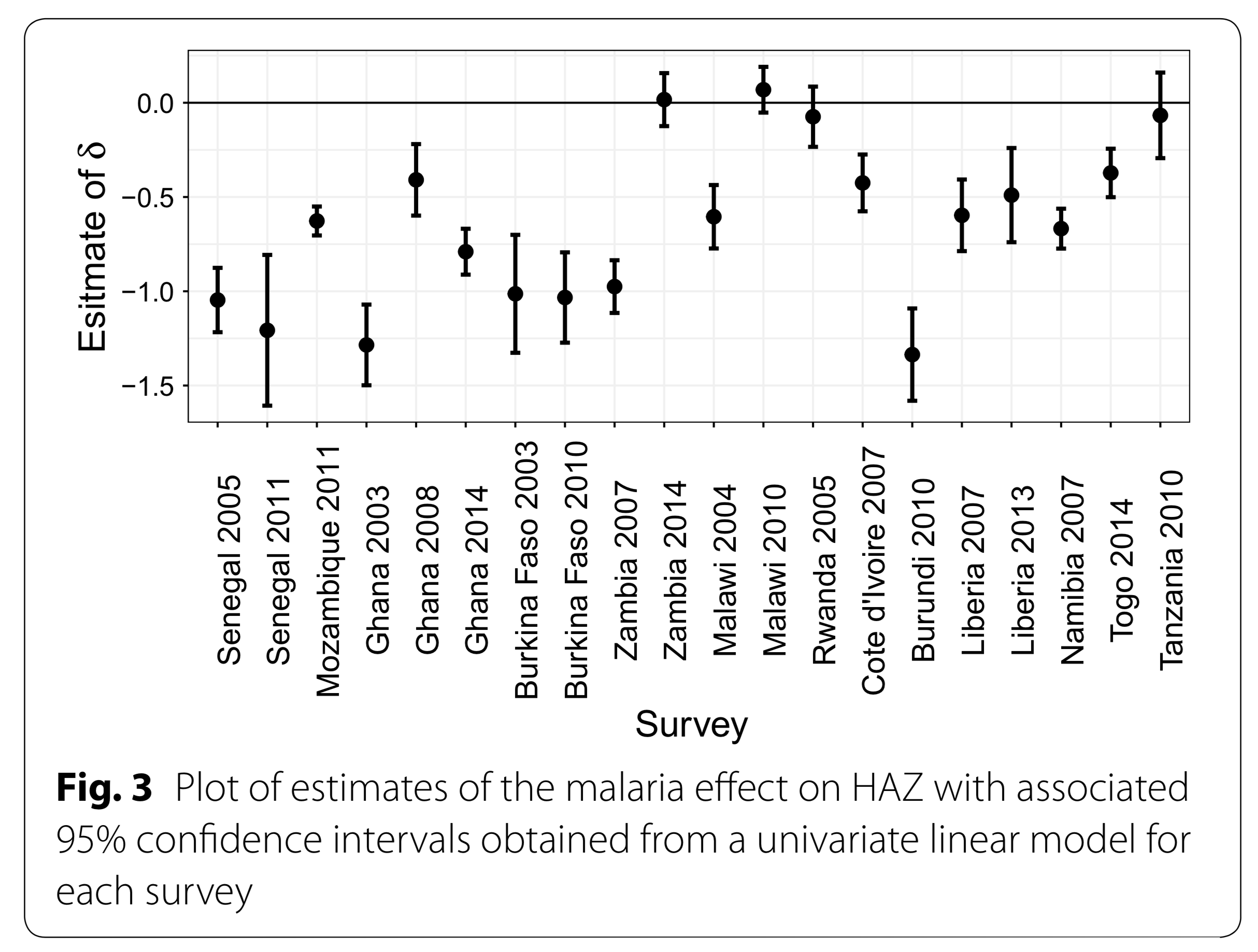
Geostatistical modelling of the association between malaria and child growth in Africa
Abstract
Background: Undernutrition among children under 5 years of age continues to be a public health challenge in many low- and middle-income countries and can lead to growth stunting. Infectious diseases may also affect child growth, however their actual impact on the latter can be difficult to quantify. In this paper, we analyse data from 20 Demographic and Health Surveys (DHS) conducted in 13 African countries to investigate the relationship between malaria and stunting. Our objective is to make inference on the association between malaria incidence during the first year of life and height-for-age Z-scores (HAZs). Methods: We develop a geostatistical model for HAZs as a function of both measured and unmeasured child-specific and spatial risk factors. We visualize stunting risk in each of the 20 analysed surveys by mapping the predictive probability that HAZ is below - 2. Finally, we carry out a meta-analysis by modelling the estimated effects of malaria incidence on HAZ from each DHS as a linear regression on national development indicators from the World Bank. Results: A non-spatial univariate linear regression of HAZ on malaria incidence showed a negative association in 18 out of 20 surveys. However, after adjusting for spatial risk factors and controlling for confounding effects, we found a weaker association between HAZ and malaria, with a mix of positive and negative estimates, of which 3 out of 20 are significantly different from zero at the conventional 5% level. The meta-analysis showed that this variation in the estimated effect of malaria incidence on HAZ is significantly associated with the amount of arable land. Conclusion: Confounding effects on the association between malaria and stunting vary both by country and over time. Geostatistical analysis provides a useful framework that allows to account for unmeasured spatial confounders. Establishing whether the association between malaria and stunting is causal would require longitudinal follow-up data on individual children.